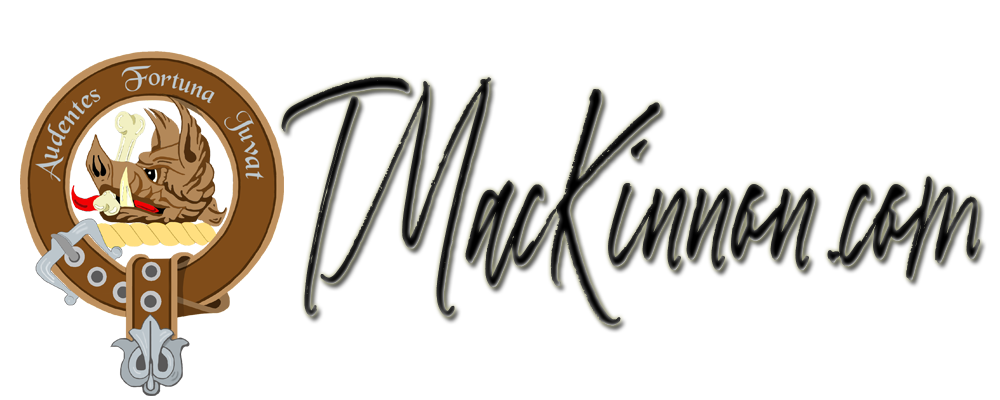the Nicaraguan Lawn Mower …
I found this neat T Shirt while walking around one of the local markets in Managua and couldn’t resist getting it because …
I found this neat T Shirt while walking around one of the local markets in Managua and couldn’t resist getting it because …
For this job we were based in the town of Rio Blanco of Matagalpa, or basically the furthest town east of Managua that is still on the pavement (even though our project was about 60 km further east … this was the closest town to base out of).
The town is about a three to four hour drive east of Managua (about 220 km) over a sub par highway, secondary roads and a few dirt road sections (with a lot of rough sections and construction). The roadway meanders through some small towns along with a  wonderfully scenic mountainous background that helps make up for the long journey. Along the route we pass many bus loads of people, trucks topped with supplies (with and without people on the back), other vehicles, as well as various horse and cattle spread out along the side of the road.
wonderfully scenic mountainous background that helps make up for the long journey. Along the route we pass many bus loads of people, trucks topped with supplies (with and without people on the back), other vehicles, as well as various horse and cattle spread out along the side of the road.
Rio Blanco (Spanish for “White River” that may have got its name for the river of the same name that pours down from Cerro Musún – yet another extinct volcano) is apparently renowned for its simplicity and its surrounding natural treasures, witch one can easily appreciate, it is a rather busy little place that boasts a population of around 30 000. Just like most places in Nicaragua, poverty is clearly abundant here. The climate here is very humid and tropical, with heavy rains almost every day (or night) because it is what they call the Rainy Season here. It will be hot and sunny one moment, then maybe get a rain shower for an hour or so and then it can easily be back to sunny again.
The hotels in Rio Blanco are inexpensive but also not very glitzy, the one we are staying is the  best in town I believe and it does have running water (no hot water though) and electricity too witch I am told not all hotels here actually do.
best in town I believe and it does have running water (no hot water though) and electricity too witch I am told not all hotels here actually do.
On the plus side it is much more of a town then the people in Managua seem to have given it credit, and although it certainly is a little bit different then most towns I have stayed in, it is not all bad. Perhaps a little rough around the edges but it seems to have all the necessary basics that we need to operate with. Gas stations, restaurants, little stores, a place to land and secure our helicopter etc. Rio Blanco is not in any travel guide so probably does not get many tourists, the people are pretty friendly but not used to dealing with outsiders from Canada (I think just bible pushers mostly) very much so we do get a lot of attention .
We have been living on local dishes such as gallo pinto (a mixture of rice and beans), grilled beef (carne) or chicken (pollo) a small salad, cheese (cuajada) and fried plantains. Almost every restaurant here has the same menu so it doesn’t really matter where you go to eat. And there are three main beers (Toña, Victoria & Premium) witch turns out is almost cheaper then water and pretty common everywhere, I would even have to say that the locals drink more beer here then back home. A cold beer in a bar can go for about $1 to $2.
It is also funny to see cattle walk through the down town like every thing is normal, especially this one particular white cow that I have saw in town early in the morning at least 3 or 4 times.
to be continued …

Here is a video collage of photos from Rio Blanco (note: not by me), Nicaragua that I found on Youtube (has some Spanish music playing along with it, could be better with the volume turned down)
youtube::jKrpBQWcvac::
…
Well after a lengthy wait and battle to get the Nicaraguan Customs to finally get all their paper work sorted (or what ever the problem was) and release our equipment to us, we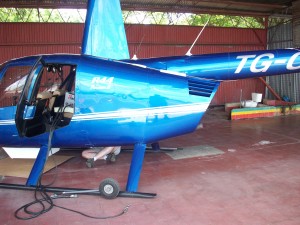 were able to get to work. And stop pretending to be American tourists or Gringos as the slang term here is.
were able to get to work. And stop pretending to be American tourists or Gringos as the slang term here is.
We rented a hanger at the airport to use while we installed our LIDAR equipment onto the helicopter. Well actually it was more so a shelter from the sun then a traditional aircraft hangar as we would define it back home (… but glad to have it none the less).
Even came with indoor plumbing facilities :) although maybe not up to North American Standards. And I am sure it would never get used by any of the females that I know, or to tell the truth I couldn’t picture anybody using it !! .
Now that all was back in order as far as equipment is concerned and we have had the grand tour of this Central American paradise (or the western side of it) it is off to the Wild’s of Nicaragua along the east coast. Oddly enough I have not heard anything good about Rio Blanco nor any the other interior areas from anybody here in the city. People around here in Managua tell us that we will need hammocks, mosquito nets, a good 4×4, plus need to bring all of our own supplies etc. etc.
Maybe it will be a real Jungle expedition just like in the movies … “Indian Jones and the Raiders of the Lost Arc adventure here I come” …

.
So after doing the touristic thing in the city of Granada we moved away from that theme and on to the ecological tourism side of things by going on a guided boat tour of Archipielago las Isleta, on Lake Nicaragua, a few minutes south of Granada.
Our young tour guide promised us that on the tour we would see where some of the richest in the country live, see some historic forts and buildings and perhaps see some wild life and nature. Very exciting to some I sure but more so just a nice change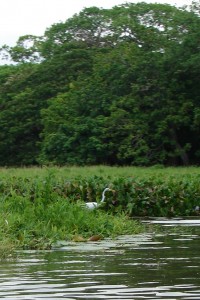 from the typical colonial like sights (it was also much cooler on the lake then it was in the city – witch was a nice temporal change).
from the typical colonial like sights (it was also much cooler on the lake then it was in the city – witch was a nice temporal change).
las Isletas is a chain of some 350+ islands created from large basaltic rock debris covered with lush green vegetation such as Mango trees, Guanacaste trees as well as other tropical flora. The main population of the islands is made up of local Nicaraguan fishermen and boatmen that service the islands,plus other common community items like a restaurant, bars, a school and a cometary.
However like most tranquil attractive areas you will always find wealthy people and foreigners whom have moved in to escape from the real world, living on their own private islands (considered little bits of paradise to some perhaps …) in their weekend cottages and / or holiday homes. This has obviously made the real estate of the area increase and it is pretty common to see for sale signs scattered about on some of the islands boasting some high asking prices.
The tour guide (whom spoke some English – or more so I think may have memorized some information for the tour) and the driver of the boat took us around many of the little islands stopping from time to time to allow us to take pictures and offer some local trivia and info about the particular island. It was kind of like a celebrity or the rich and famous who’s who and where they live, much like you would see in Hollywood, for example we were showed where the owner of the Toyota lived, where the guy who ran the beer companies lived, the bank owners, politicians etc etc.
All witch pretty much was not retained in my little memory (not enough RAM upstairs perhaps).
The area area has some extraordinary species living here including the only freshwater sharks in the world. It also contains other wildlife such as cormorants, kingfishers, parrots, parakeets, osprey , jaguars and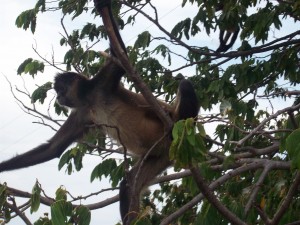 howler monkeys . In fact there was an island that was called Money island that in fact had Howler monkeys inhabiting it.
howler monkeys . In fact there was an island that was called Money island that in fact had Howler monkeys inhabiting it.
They swung down to the boat as we stopped along side of it. At first I thought that it was kind of neat that these animals lived on such a small tropical island like this but then soon realized that they did not originate on the islands but rather were brought there by the restaurant owner of the adjacent island in order to attract tourists to the islands (and perhaps increase his business I presume). So although the Monkey Island was maybe as genuine as a three dollar bill, it was still entertaining enough to watch some funny monkeys in the so call wilds of Nicaragua. Even though all they really did was throw around an empty coke bottle and pleasure them selves playing with their genitalia while posing for the camera.
Well I wasn’t actually counting but it sure didn’t seem like there were over 300 islands and if so we went by them pretty fast. so after the refreshing change from the city heat it was back to shore and then back to Managua to check on the update of our Customs problems.
.
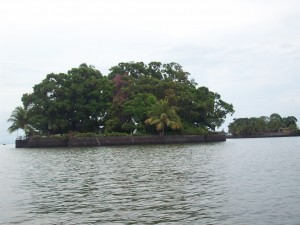

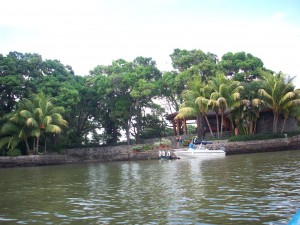

.
After checking out the smoking Masaya Volcano / National Park on our second day of site seeing we continued south to the city of Granada (… we were told that it is supposed to be the country’s nicest city and a perfectly preserved colonial masterpiece … so I expect there will be plenty of tourists, or at least more then there are in Managua).
The city of Granada, rich in history and culture, is situated on the northwestern shore of Lake Cocibolca is Nicaragua’s fourth largest city and historically one of Nicaragua’s most important places both economically and politically.
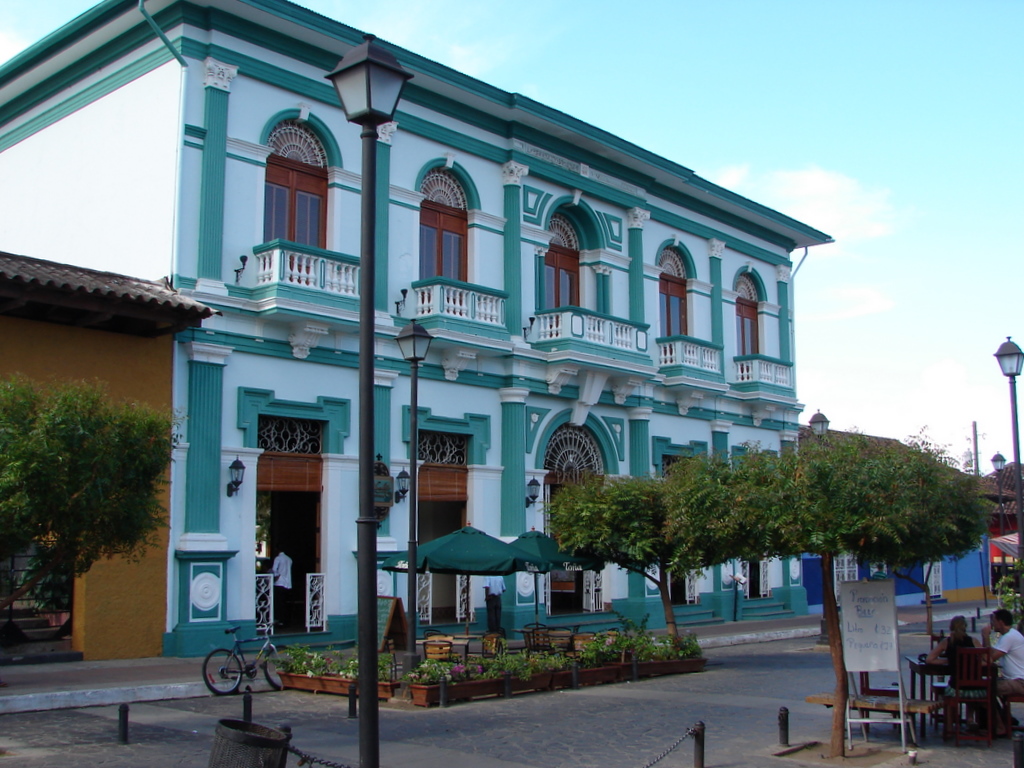 The city has a strong colonial heritage, easily evident from the architecture and layout of the large Spanish built homes, businesses, churches and other buildings over looked by a picturesque volcanic background. It is one of the main destinations for most international travelers (except for people like us who come here to go to work in the Rain Forest :) regions) that come to Nicaragua.
The city has a strong colonial heritage, easily evident from the architecture and layout of the large Spanish built homes, businesses, churches and other buildings over looked by a picturesque volcanic background. It is one of the main destinations for most international travelers (except for people like us who come here to go to work in the Rain Forest :) regions) that come to Nicaragua.
Like most colonial cities in Central America, Granada is built around a main square (known as Parque Central) with many churches and cathedrals and other historic looking buildings. Located close to the Parque Central you will find Granada’s cathedral, city hall, banks, cultural centers, hotels, as well as many small shops and stands 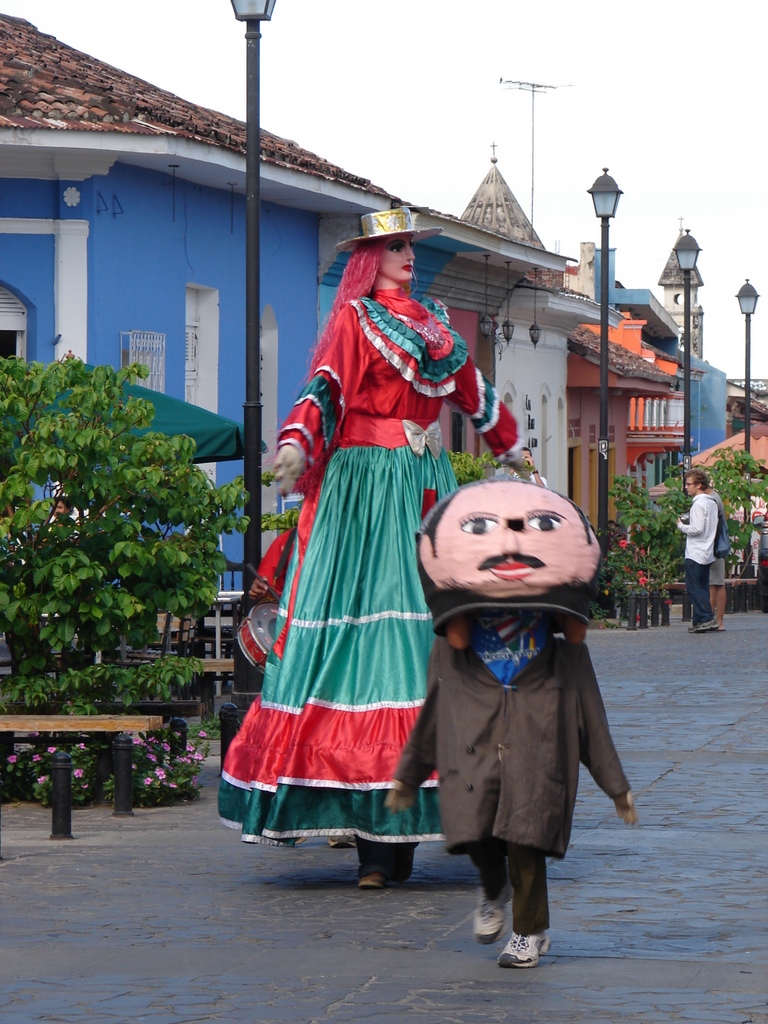 selling traditional food, handcrafts and horse drawn carriages.
selling traditional food, handcrafts and horse drawn carriages.
Parque Central is like the hub of the city’s social life and always full of activity. Everyday you can come here to find people selling their crafts, food (street food here was good, although I don’t really know for sure what it was I ate!) and other items, watch entertainers, meet others hanging around and also the young entrepreneurs that are after the tourists money providing just about any service from watching your car to showing you around.
One of the busiest avenues of the city starts on the left side of the Cathedral and runs all the way to the lake. It is bordered on both sides with large colonial houses, shops, restaurants and historical buildings. As you walk down the street you kind of feel like somebody special as all the shop merchants and waitresses try to persuade you to come into their little shop / bar or restaurant offering many specials or highlighting their gifts or items. ( Although very tempting, I managed to get through with out breaking the bank … ).
At 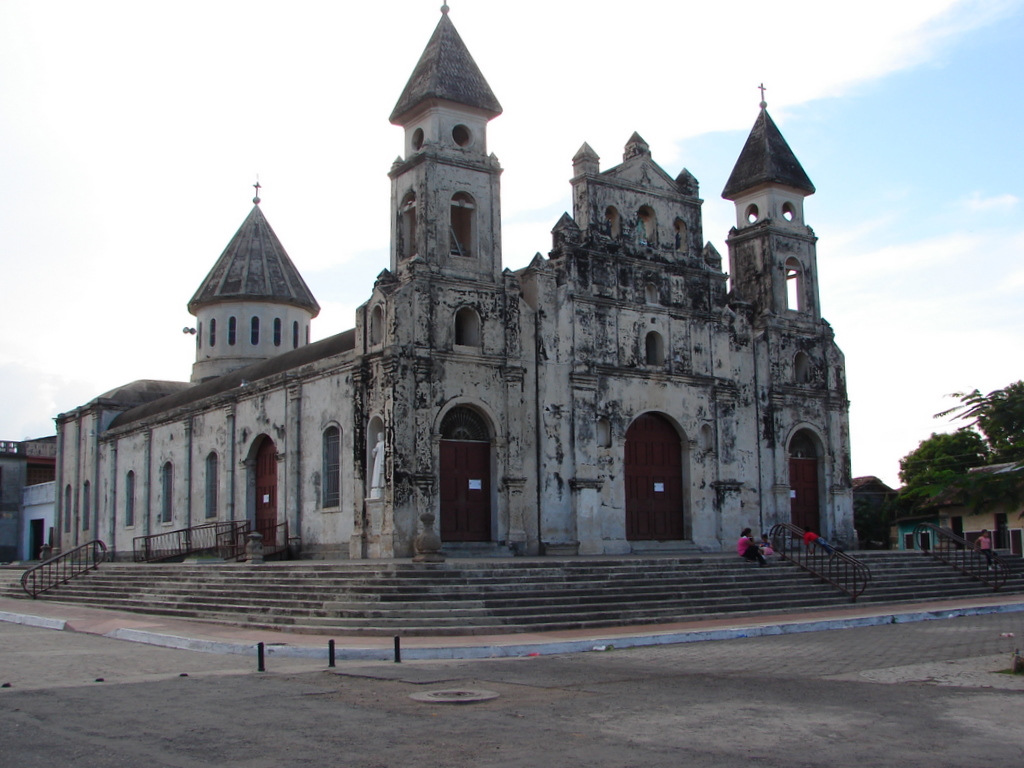 the end of the street is yet another large stone built heritage church (Iglesia Guadalupe), one that has saw plenty of damage over the years. This one was used several times as a stronghold during battles because it was close the water front. Not sure why all these churches have been destroyed and rebuilt so many times nor why a small town needs so many, just like many of other Central America cities there are numerous churches and cathedrals (and all within walking distance usually) most with very interesting architecture and history.
the end of the street is yet another large stone built heritage church (Iglesia Guadalupe), one that has saw plenty of damage over the years. This one was used several times as a stronghold during battles because it was close the water front. Not sure why all these churches have been destroyed and rebuilt so many times nor why a small town needs so many, just like many of other Central America cities there are numerous churches and cathedrals (and all within walking distance usually) most with very interesting architecture and history.
At Iglesia La Merced they allow you to climb (for a $1 donation … well worth it) the very narrow stair case of the bell tower onto the rooftop where you can get an amazing view of the city and see all the tiled rooftops and court yards of the buildings below. I could imagine that this steep narrow climb would not be allowed back in Canada (let alone walking on the roof top unsupervised) as I am sure it would be deemed un safe (or have many signs and alterations making it loose its rustic dare-ful charm), but in a country like this where people have “No Fear”, it is just the norm.
Beside the large yellow cathedral (yes it too was destroyed once … but has been rebuilt and looks pretty sharp as a backdrop to the busy Parque Central) there is a large cross like monument (that kids seem to like to play on …), I have been told us that there was a time capsule buried underneath it containing common artifacts and personal belongings of the 19th century. .. 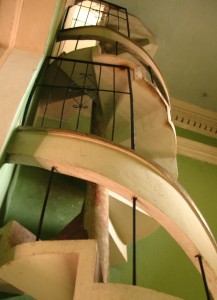 Maybe I will come back with my shovel later and see if any gold was buried with it.
Maybe I will come back with my shovel later and see if any gold was buried with it.
Now as nice and quaint as a place like this can be one can only walk around, eat local cuisine and admire the architecture, people and churches for so long … therefore when a young lad came up to us offering us a boat tour of Archipielago las Isleta we took him up on it.
Granada borders on Lake Nicaragua, the counties largest fresh water body (no where as big as our Great lakes but none the less very large). He promised us that on the tour we would see where some of the richest in the country live, see some historic forts and buildings (yet more architecture …) and perhaps see some the local wild life and nature such as birds, fish, monkies etc. Very exciting to some I sure but more so a nice change from the typical colonial like sights (it was also much cooler on the lake then it was in the city – witch was nice).
Continue to the Next stop on the tour …
.
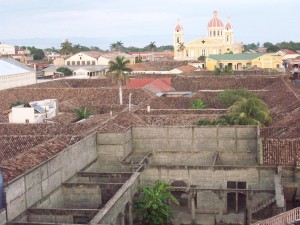
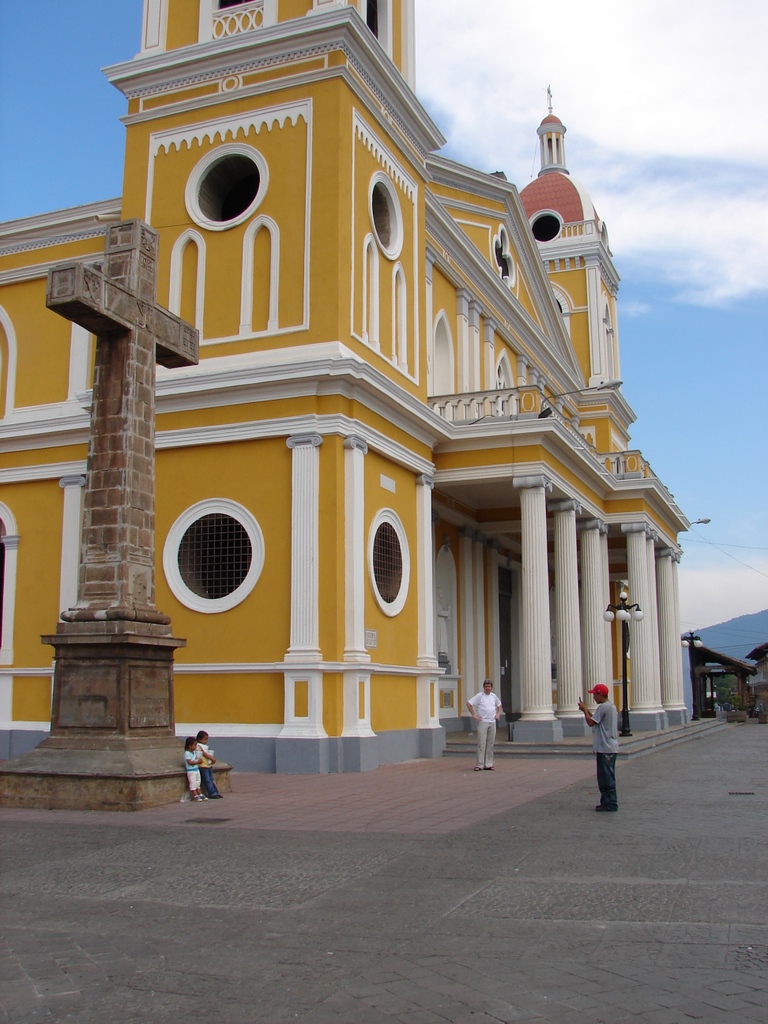
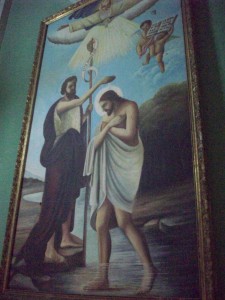

Continue to the Next stop on the tour …
…
Well with more time on our hands thanks to the Nicaraguan customs officials  we set out for another tourist like tour of the country, but this time (after talking to the people at the hotel) we decided to check out other popular stops outside the city.
we set out for another tourist like tour of the country, but this time (after talking to the people at the hotel) we decided to check out other popular stops outside the city.
South of the City of Managua is the Parque Nacional Volcan Masaya, the countries largest National Park and one of several protected areas of Nicaragua. The Masaya is a shield volcano composed of nested about thirteen vents, calderas and craters composed of basaltic lavas and tephras (air borne material produced by volcanic eruptions). It formed over 2500 years ago by a basaltic eruption, since then a new basaltic complex has grown from eruptions from a set of vents that include the Masaya and Nindiri cones.
The Santiago crater is the one thatappears most active as it continually emits large amounts
of sulfur dioxide gas into the air and is the main attraction to most visitors to the park. The smoke is thick enough that it can easily be depicted from a satellite image. Climbing up to the edge of the Masaya crater provides an immaculate view of the surrounding country side as well as a picturesque nature view of the interesting flora and fauna that co exists within the crater itself.
A set of stone steps takes you to a high viewing point above the smoking Santiago crater and at the top is a large wooden cross called the Borbadilla cross that was planted near the border of the crater in order to exorcise the devil, because it was believed that this was the entrance to hell.
Easy to understand why people could think of something like this. I am not sure if the Volcano had anything to do with it, but the day that we visited the park felt like one of the hottest days of the trip so far and I ended up with a bit of a sun burn as well. So needless to say I had no problem leaving and heading to our next stop on the trip.
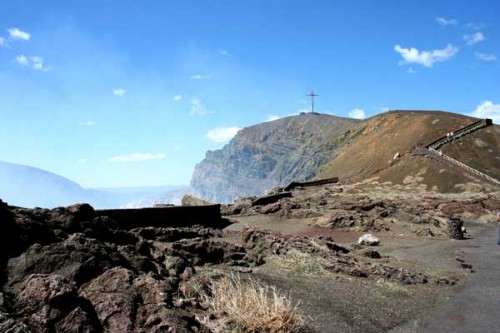
Borbadilla cross & stone steps leading up to the edge of the Santiago crater
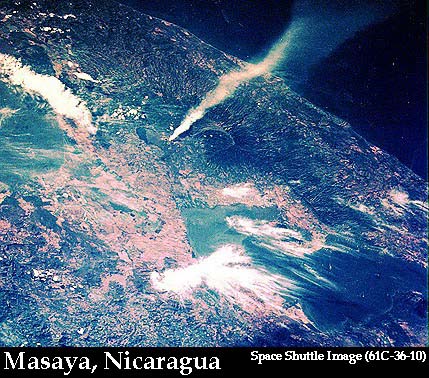
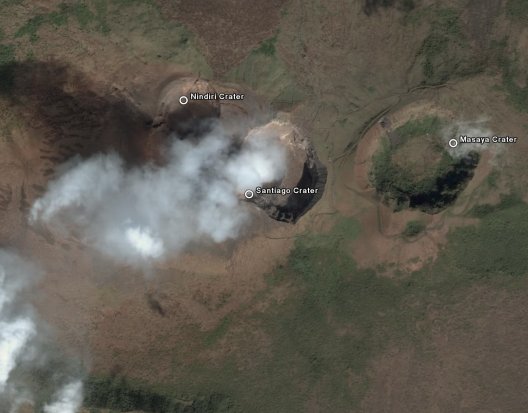
(Image on left is from the Space Shuttle source and the image on the right is from Google Earth)
So our tour continued ( see previous post) around the city of Managua stopping at various historic and modern sites including some of the ones noted below.
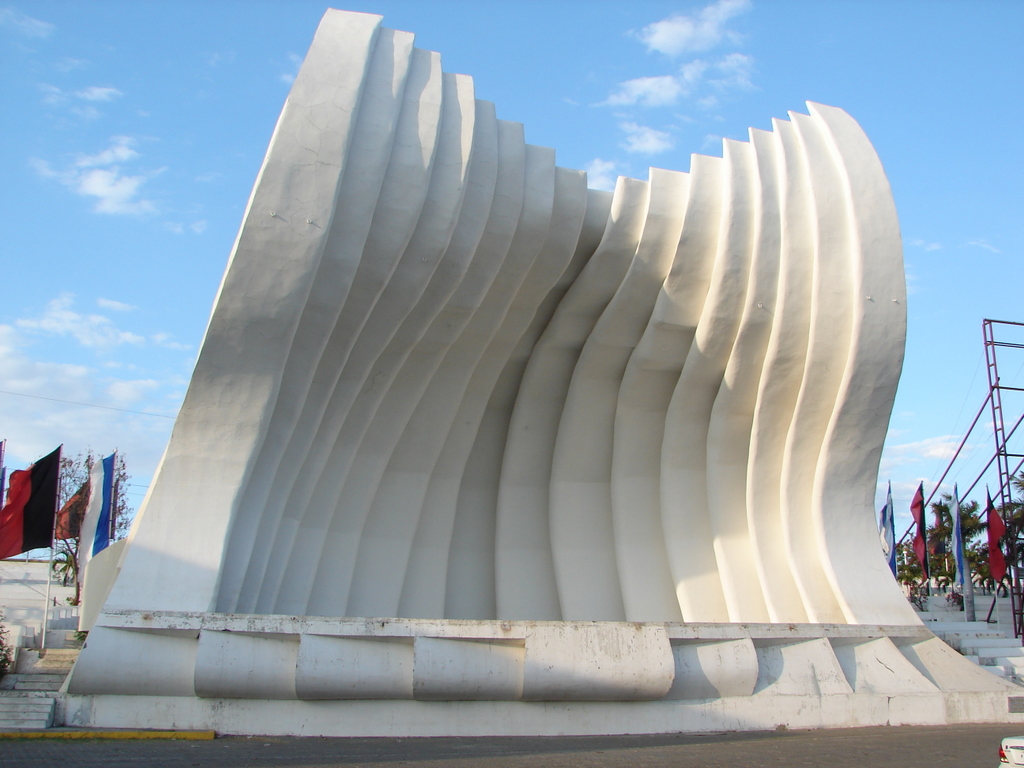 We stopped down along the waterfront of Lake Managua to check out a few sites. First was the La Concha Acustica found close to Lake Managua is a large concrete sculpture resembling a large surging water wave that is about to crash upon the shore, we were told that it is has been used to stage concerts, political speeches, cultural and religious events like the visit from the Popes from the Vatican.
We stopped down along the waterfront of Lake Managua to check out a few sites. First was the La Concha Acustica found close to Lake Managua is a large concrete sculpture resembling a large surging water wave that is about to crash upon the shore, we were told that it is has been used to stage concerts, political speeches, cultural and religious events like the visit from the Popes from the Vatican.
A large white obelisk monument is located with in the same park and it actually has a picture of Pope John Paul II on it. The site is where the Pope addressed the Nicaraguan people on his visit.
It does not look like there have been many events here recently ( … great place for a rock concert!) and kind of looks run down or maybe it is not well maintained. Lots of weeds growing around with garbage everywhere and there is a big ugly pink presidential billboard right beside the structure.
The Dennis Martínez National Stadium (it was the largest stadium in Central  America at the end of its construction, it no longer the biggest but still the largest in Nicaragua) is a large baseball stadium named in honor of Nicaragua’s first Major League Baseball (MLB) player Dennis Martínez whom played for teams such as the Montreal Expos (I remember watching him back when I was a kid).
America at the end of its construction, it no longer the biggest but still the largest in Nicaragua) is a large baseball stadium named in honor of Nicaragua’s first Major League Baseball (MLB) player Dennis Martínez whom played for teams such as the Montreal Expos (I remember watching him back when I was a kid).
The building has these large arms that extend from the outside and then over the stands housing large lights for the games, at first glance we thought that the place was under reconstruction and these things might have been cranes or what not.
The stadium also serves as a venue for football (what we call soccer in North America) games, as well as concerts and other events (I doubt that Hockey is on that list). It is one of buildings that survived the large 1972 earthquake. Baseball is Nicaragua’s national sport and the stadium is where the Managua’s Boer’s team plays. There was no event going on at the time nor was the facility open so we could only google from the out side and only wonder what the Managua’s Boer’s games would be like. I noticed that there was not much room to park so it must be pretty busy place on the streets come game day.
—
This place continues to amaze me everyday because although it shares many similarities to Canada it still has many differences (makes me feel like I have stepped back in time sometimes …). For instance it is pretty common to have a horse and buggy going down any main street, 3 or 4 people riding on a small motorcycle or even a group of people riding on the back of a pick up truck.
We ventured on over to the El Huembes Market, a large place that houses thousands of little vendors and people, here they sell everything from food, souvenirs, cosmetics, house wares, clothes, hardware to hammocks, rocking chairs and many other local craft items.
It was extremely large, busy and easy to get lost, as there are many little hallways and corridors with vendors tucked in everywhere however apparently is only the second largest market in Nicaragua (The other one must be pretty big …). 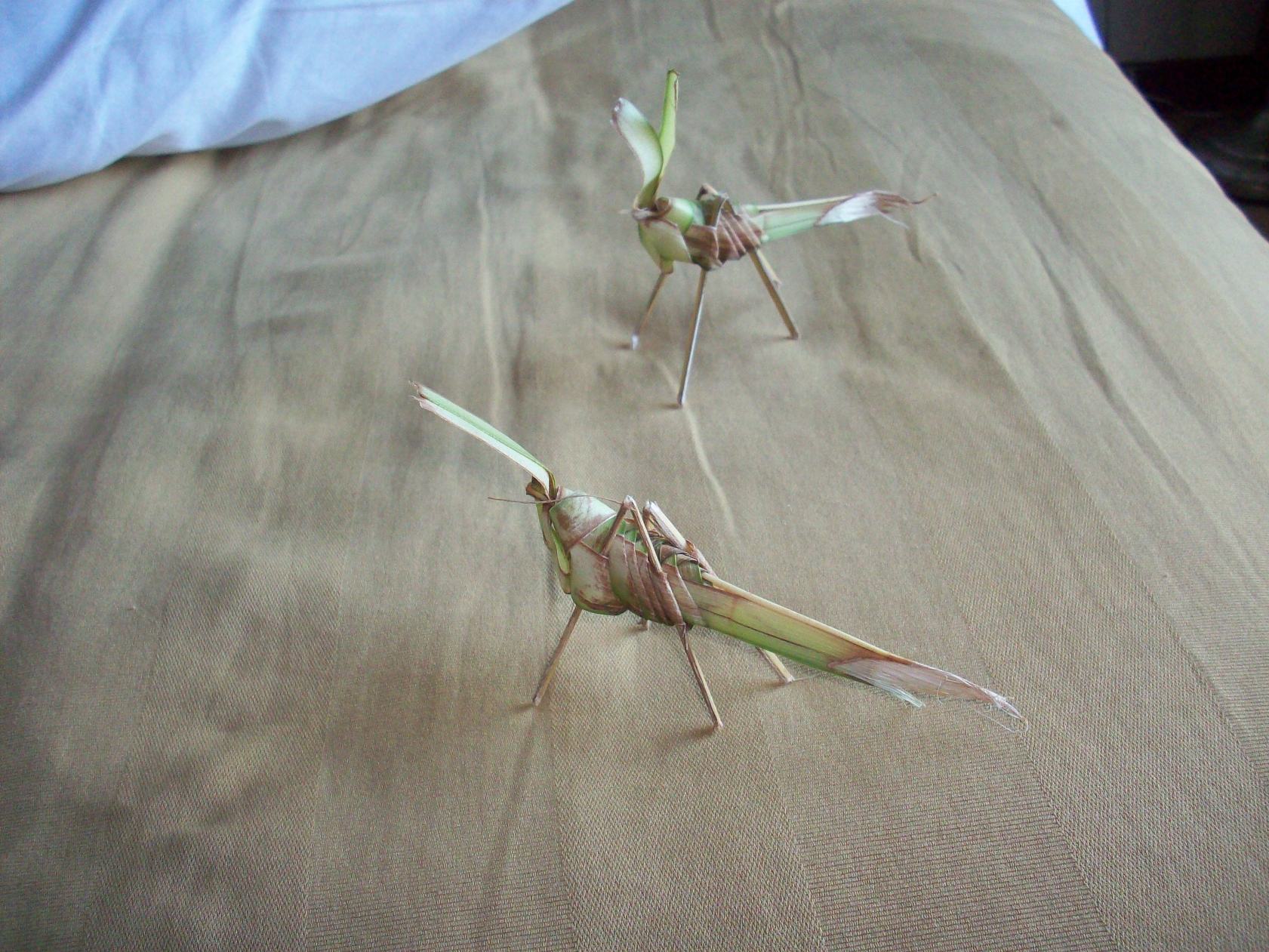
—
Every body here in this city tries to offer you some sort of service here in return for a little cash, wether it be the dude who stands to watch your truck for you, the squeegee kids, people who try to sell youstuff at your window while you wait for a red light or the children in the park that approach you with their palm masterpieces in exchange for some coins.
Eventually we finished up, stopping at a local restaurant for some Nicaraguan style food (Carne a la Planche etc) and then returned to the hotel for some local drinks by the pool. While Nicaragua Customs takes thier time processing our equipment that we need to complete the job here.
… tough job but hey somebody has to do it …
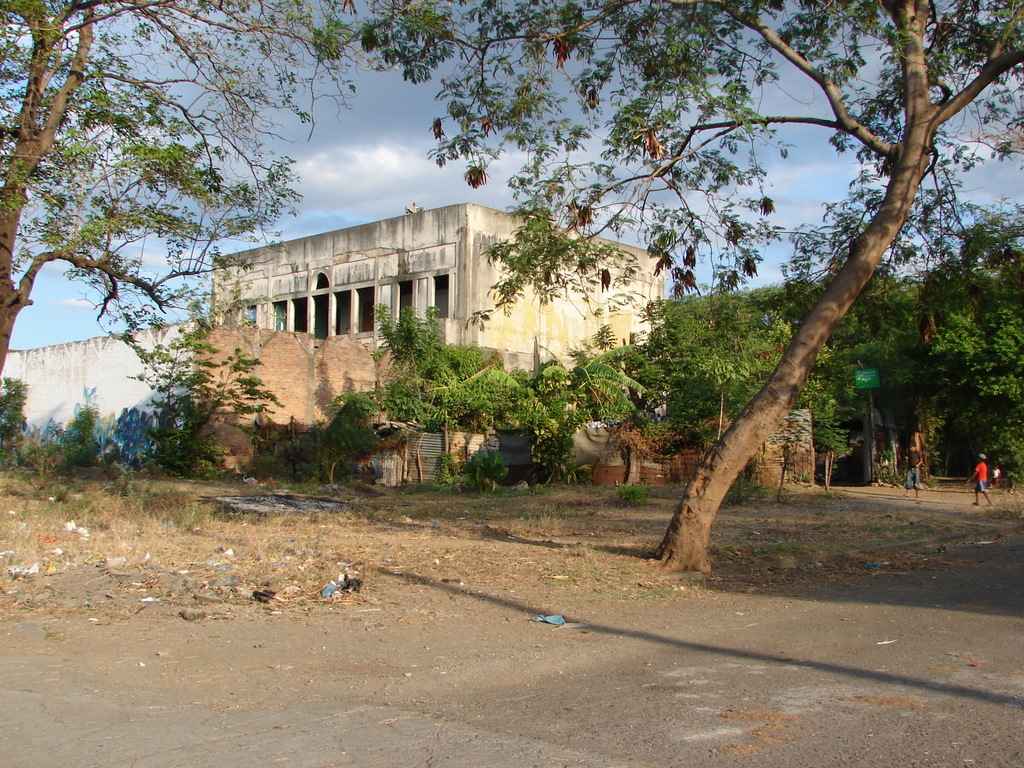

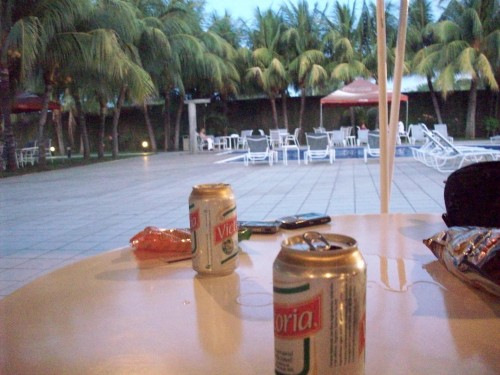
So unlike most of my jobs that I normally get sent on, this particular one has provided me with an abundant amount of free time due to some security / customs issues involved with our survey gear (fortunate for me, not so fortunate for our company), so I have had amble time to explore the city and it’s culture. Some of the things that I explored were …
.
